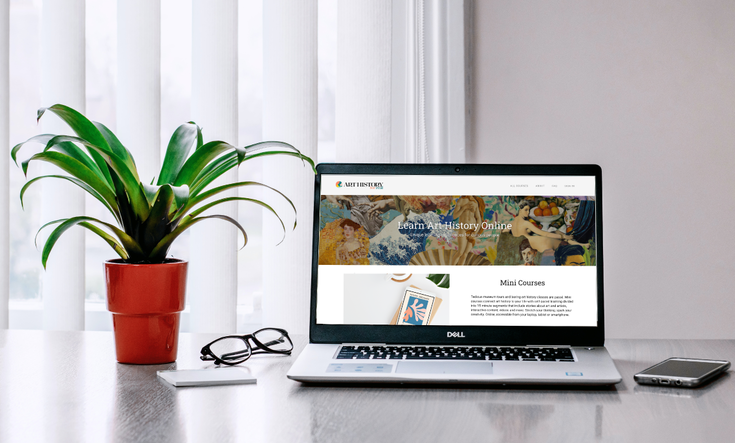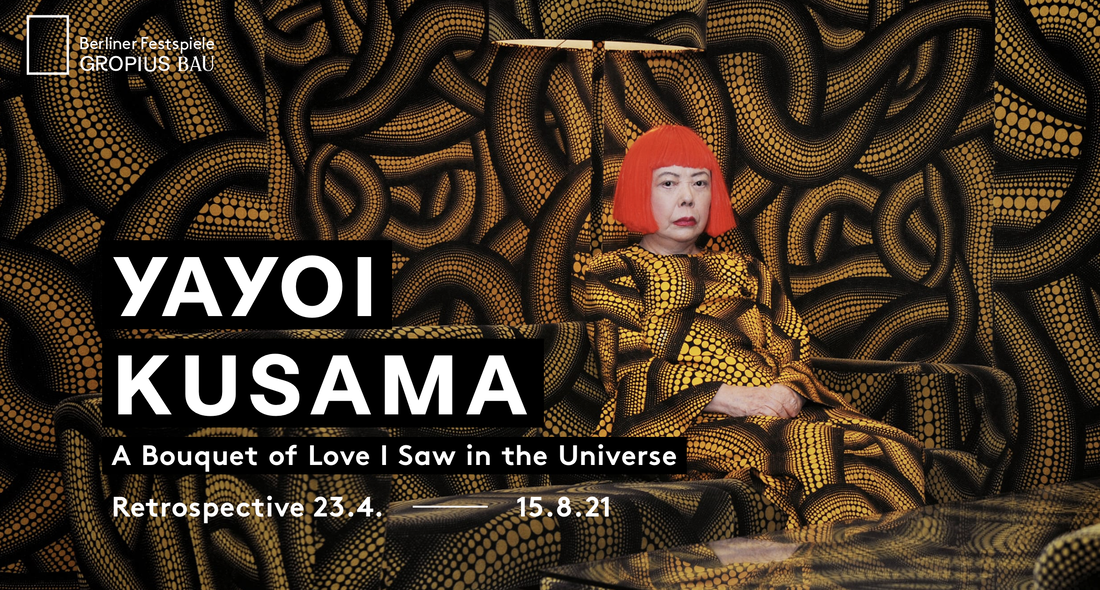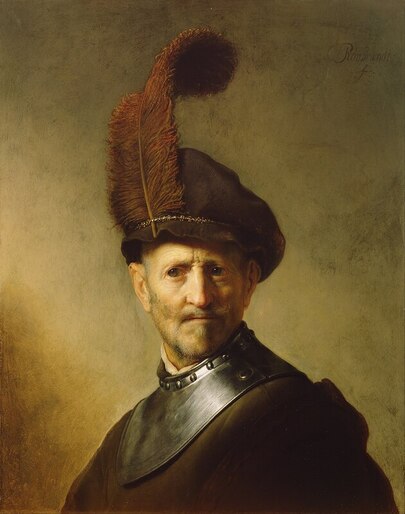|
Visiting a museum in 2021 is almost as challenging as it was in 2020. Last year museums around the world were closed for at a minimum of six months while attendance at the top 100 museums dropped a whopping of 77%! Some museums are beginning to reopen after being closed for a full year, while others had opened yet are closed again as I write this due to third waves of COVID. Fortunately for the art-starved some museums have fast-tracked their online offerings and provide dynamic ways to engage and experience art from home. I share here my favorite interactive digital works, programs and ongoing live events offered on Zoom, Instagram Live and YouTube. Interactive Online ExhibitionsYayoi Kusauma at 92 years old is one of the world’s most famous contemporary artists. This year several exhibitions of her work are featured in museums around the globe. Some offer experiences from home including Gropius Bau's exhibition Yayoi Kusauma: A Bouquet of Love I Saw in The Universe. Gropius Bau’s guide delivers an experience that allows you to explore Kusauma’s works online. It explores Kusauma’s works from her lengthy artistic career and reveals how her art goes well beyond the iconic polka dots. There is depth to Kusauma’s art that address social and cultural themes. Another excellent interactive where you can experience the art and learn about the artist is Alice Neel’s New York exhibition put online by The Met. The exhibition celebrates Alice Neel, a painter of real life in New York City. I love one of her quotes, “One of the reasons I painted was to catch life as it goes by, right hot off the griddle”. My favorites are her works of pregnant women; she paints what male artists typically do not. Galleries of Alice Neel’s works are here. There’s much to explore. Take your time. Live Virtual EventsA handful of museums offer live events online via social platforms and/or on Zoom. One of my favorites is Instagram Live—events are typically live in the museum and led by a curator or guide through a special exhibition. The downside is it is tough to know when these events are scheduled. Another venue is Facebook live events. I suggest following your favorite museum on Facebook to be notified of events offered. Below are a handful of events you can plan for. Newark Museum from Home: The Newark Museum offers a robust roster of online events; most are free. Signing up for their newsletter will give you the scoop on upcoming events. Events include cooking classes based on artworks, art and happy hour, virtual tours and more. I love their tagline: ‘Virtual experiences for all at #NMOAathome. The Frick Collection in New York City offers weekly cocktail with a curator, a mini series exploring a work of art via YouTube Live. They also offer free Zoom sessions titled “Continue the Conversation” that explore a work of art with guided conversation. Canadian McMichael Collection. One of my favorite Canadian museums is the McMichael Collection. They have an excellent collection to explore online, as well as offer free guided virtual tours around specific exhibitions. Currently they are offering A Like Vision: The Group of Seven at 100. It is excellent. More to Explore...There are other alternatives including recorded art talks by Harvard University. They offer a series of brief featuring in-depth views of art objects--Art Talks at the Harvard Museum. Another is Heni Talks, one of my favorite sites for excellent quality videos on various topics in art history.
Cheers and enjoy! PS Check out my platform Art History For Real which offers unique Mini Courses on art history through a modern lens! 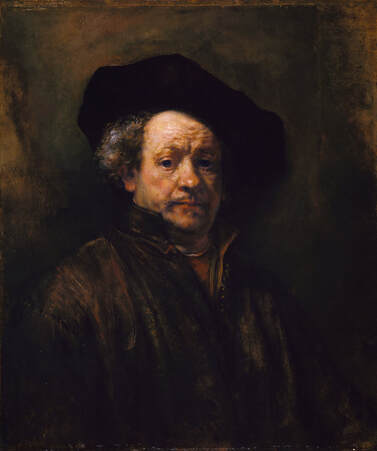 Rembrandt (1660). At the Metropolitan Museum of Art in New York City. Rembrandt (1660). At the Metropolitan Museum of Art in New York City. I tried to find an online exhibit on Rembrandt given a ‘wealth of museums’ according to the Art Newspaper, around the world are celebrating the ‘Year of the Rembrandt’ as the year 2019 marks the 350th anniversary Rembrandt’s death (Luke & Da Silva, 2019). Other than a rather static virtual exhibition sponsored by a group of museums in Southern California, I couldn’t find one—so I created my own. Though there are several terrific exhibits to visit in person, including at the Rijksmuseum in Amsterdam with its year long celebration of events and exhibitions, and at The Met, Praise of Painting: Dutch Masterpieces, and Dutch Painting in the Age of Rembrandt at the Saint Louis Museum of Art, my online exhibit is the next best thing. I created ‘Celebrate Rembrandt’ online exhibit using a variety of dynamic media which allows you to enjoy a selection of Rembrandt’s works and learn about this Dutch Master from the convenience of your desktop or digital device. It includes a selection of excellent (and brief) videos, images, and an interactive media piece that explores one of Rembrandt’s most famous works, The Night Watch. But First, A Brief Background of Rembrandt Rembrandt Harmenszoon van Rijn born in 1606 known as ‘Rembrandt’, was one of the most innovative and greatest artists of his time, and the most significant in Dutch art history. Rembrandt created works in three mediums—painting, drawing and etching, that included self-portraits, landscapes, nudes, ‘tronies’ (paintings of character studies often with exaggerated expressions). His etchings created a new category of enduring works (prints) which transformed printmaking into a legitimate art form (below is a terrific video that shows how he made his etchings). He also introduced a new brushstroke technique consisting of a rough and coarse appearance, described in Dutch as ‘grof mania’ (later Van Gogh took this technique to a new level). His textured brushstrokes differed (drastically) from the smooth, fine painting of the time. Also of significance are Rembrandt’s self-portraits; he painted many, which left us with a visual biography that captures Rembrandt in a series of realistic and frequently unglamorous poses. Rembrandt lived in the Dutch Republic (now the Netherlands) and mostly in Amsterdam for the duration of his life, never traveling to study in Italy or elsewhere as many of his contemporaries had. He worked as an apprentice under two artists for brief periods, eventually opening his own studio and taking on students. Rembrandt’s talents were recognized early on which led to several patrons, though his success is also attributed to connections of his wife's family which benefited Rembrandt greatly. He married Saskia van Ulyenburgh in 1634, and moved into a newly built (expensive) home in an upscale neighborhood in 1639. And though Rembrandt earned a good living, his living expenses were onerous; he was known for living well beyond his means. He struggled financially for most of his life, and died a poor man in 1669. Two Rembrandt Masterpieces The Night Watch (1642) One of Rembrandt most famous works is The Night Watch, on view in the Rijksmuseum. It’s considered one of Rembrandt’s most significant works not only because of its size, but because of how he depicted a militia, which was typically painted as formal and static, yet Rembrandt created a dynamic scene, with action and interesting figures including a young child. The work was commissioned by the musketeer branch of the civic militia; it was finished in 1642. The painting is so enormous that the Risksmuseum had to build a custom gallery for a fitting display in a recent renovation. In 1715, when the painting was moved to Amsterdam Hall, it was trimmed on all four sides to accommodate the painting in it’s new location. The trimmings have yet to be found. Click on The Night Watch image below to explore the painting. Return back to this webpage to continue with the exhibition. 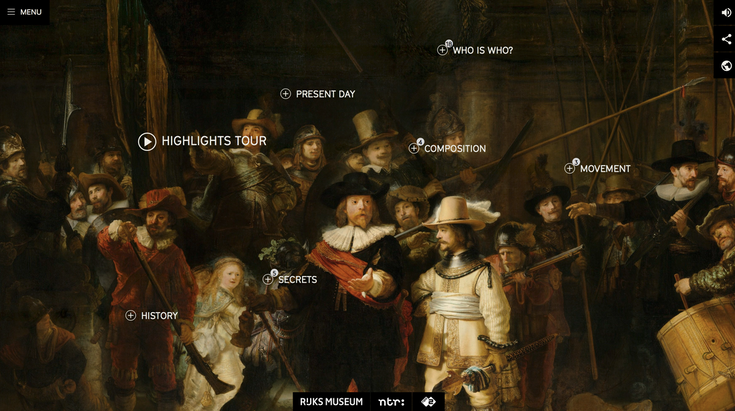 Click on the image: it will open in a new window and take you to an interactive media on the website of the Rijksmuseum. Explore by clicking on the ‘Start’ button; start with the ‘Highlights Tour’. Click on the image: it will open in a new window and take you to an interactive media on the website of the Rijksmuseum. Explore by clicking on the ‘Start’ button; start with the ‘Highlights Tour’. Old Man in Military Costume (1630-31) This is is marvelous work, considered a tronie (character study). Just look at the expression of the man’s face and how Rembrandt’s technique created his expression, and the ostrich plume on his hat. Most interesting is the discovery of what’s under the painting, which was discovered with x-ray fluorescene technology. There’s another figure underneath, which a conservation team at The Getty Research Institute reconstructed. Click on the Old Man in Military Costume image below (it will open in a new window on a different website) to read about the painting's analysis, and scroll down the page to view the re-constructed image and the machine used for scanning. Rembrandt as Printmaker Rembrandt created a new genre of art with his etching technique, known as printmaking. I never was clear on how prints were made in Rembrandt's time—the video by Christie's describes the process beautifully (and briefly). His prints transformed how printmaking was viewed—which was into a legitimate art category. His contemporaries at the time were duly impressed with his etching ability, critics even suggested he had a ‘secret method’ all his own that he didn’t even share with his students. Rembrandt made approximately 290 plates, of which 79 exist today. Interesting is their size; the plates were small, none larger than 21 by 18 inches, most the size of a postcard. Video: Rembrandt: Pioneer Printmaker (1:52 minutes) Video: How Rembrandt Made His Etchings: Christie's (4:08 minutes) To learn even more about Rembrandt’s prints, visit this link to an essay by the Met Museum by Nadine Orenstein, and this article by Ed de Heer. Self Portraits Rembrandt painted, drew and etched, 50 magnificent self portraits, and even though there are approximately 90 that exist, not all are attributed to Rembrandt; research reveals that several were painted by Rembrandt’s students—he had them copy his portraits as part of their training. Rembrandt created self portraits starting in his early 20s up until his death at the age of 63. Some of his portraits show him in unflattering poses, such as Rembrandt with an open mouth, messy hair, a surprised expression and even as an older man complete with wrinkles and extra flesh. Video: Rembrandt, Self Portrait (3:55 minutes) To learn more about Rembrandt’s self portraits, see Rembrandt: Selected Self Portraits at rembrandtpainting.net. I hope you enjoyed 'Celebrate Rembrandt' online exhibit. Below I've pulled together a selection of sites to further explore Rembrandt's works, this Dutch Master and most significant artist of all time. Enjoy! More to Explore Online
List of Museum Exhibitions
|
Museums for Real is a blog with insights and ideas on how to make museums relevant and enjoyable for everyone.
|
